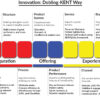
A few days back I wrote a blog titled, India’s Healthcare Sector: Growth Prospects and Structural Challenges. Building on this analysis of India’s healthcare growth trajectory, it becomes essential to examine the hospital industry—the dominant component of the sector—through a structured strategic lens. While projections highlight remarkable opportunities for expansion and investment, the industry also faces systemic weaknesses and external threats that could shape its evolution over the coming decade. A SWOT analysis of the Indian hospital industry helps to contextualize its strengths, vulnerabilities, opportunities, and risks, offering a clearer perspective for policymakers, investors, and healthcare providers navigating this complex landscape. To understand how these growth prospects translate into real-world strategies and challenges, it is useful to view the Indian hospital industry through a SWOT analysis framework.”
SWOT Analysis of the Indian Hospital Industry
Strengths
The Indian hospital industry benefits from its position as the largest segment of the healthcare sector, accounting for nearly 80% of overall spending. Its scale provides significant economic impact and attracts both domestic and foreign investment. India’s large and growing middle class fuels demand for advanced tertiary and quaternary care, while medical tourism further boosts revenues due to cost advantages and high-quality clinical expertise. The country also has a strong base of trained doctors and specialists, many of whom are internationally recognized. Corporate hospital chains such as Apollo, Fortis, and Manipal have built trusted brands, ensuring patient confidence and loyalty. In addition, the sector has demonstrated adaptability by rapidly adopting digital health tools such as telemedicine and artificial intelligence, enabling improved efficiency and access.
Weaknesses
Despite its growth, the industry struggles with structural inefficiencies. India has a bed-to-population ratio of only 1.3 per 1,000 people, far below the WHO recommendation of 3, creating a shortage of around 2.4 million hospital beds. The imbalance between urban and rural infrastructure is stark, with rural areas underserved and urban centers overcrowded. Workforce shortages compound the problem, as the demand for doctors, nurses, and allied health professionals far exceeds supply. Rising operational costs, dependence on imported medical technology, and fragmented regulation also limit scalability. Teaching hospitals, while vital for workforce development, often lag in revenue efficiency, affecting investor perception.

Opportunities
The hospital sector is poised for expansion with an expected CAGR of 8% from 2024 to 2032, reaching $194 billion. The demand-supply gap in hospital beds offers significant opportunities for greenfield projects, public-private partnerships, and healthcare real estate development. Tier-2 and tier-3 cities represent untapped markets where new facilities can capture rising demand. The doubling of global demand for Indian healthcare professionals by 2030 also provides an opportunity to position India as a global talent hub. Digital health innovations, AI-based diagnostics, and telemedicine platforms can further extend reach and efficiency. Insurance penetration, which remains low in India, offers another growth frontier as government and private players expand health insurance coverage.
Threats
The sector faces multiple risks that could undermine its growth trajectory. The reliance on private capital may deepen inequalities, with urban and affluent populations receiving disproportionate benefits while rural populations remain underserved. Rising healthcare costs risk triggering affordability issues, particularly in the absence of robust insurance coverage. Talent migration poses another threat, as Indian doctors and nurses are increasingly sought after abroad, potentially worsening domestic shortages. Policy uncertainty and regulatory hurdles around pricing, land acquisition, and accreditation could also constrain expansion. Finally, global economic slowdowns or pandemics could disrupt investment flows and expose vulnerabilities in supply chains for medical equipment and pharmaceuticals.
In summary, India’s healthcare sector is on an impressive growth path, but the hospital industry—the backbone of this ecosystem—must balance opportunities for expansion with systemic weaknesses and external risks. The SWOT analysis highlights that while strong brands, rising demand, and digital innovation create fertile ground for growth, challenges such as infrastructure shortfalls, workforce gaps, and policy uncertainties cannot be ignored. For investors, policymakers, and providers alike, the task ahead lies in leveraging strengths and opportunities while proactively addressing vulnerabilities to ensure that India’s healthcare expansion is both profitable and equitable.
Dr. Prahlada N.B
MBBS (JJMMC), MS (PGIMER, Chandigarh).
MBA in Healthcare & Hospital Management (BITS, Pilani),
Postgraduate Certificate in Technology Leadership and Innovation (MIT, USA)
Executive Programme in Strategic Management (IIM, Lucknow)
Senior Management Programme in Healthcare Management (IIM, Kozhikode)
Advanced Certificate in AI for Digital Health and Imaging Program (IISc, Bengaluru).
Senior Professor and former Head,
Department of ENT-Head & Neck Surgery, Skull Base Surgery, Cochlear Implant Surgery.
Basaveshwara Medical College & Hospital, Chitradurga, Karnataka, India.
My Vision: I don’t want to be a genius. I want to be a person with a bundle of experience.
My Mission: Help others achieve their life’s objectives in my presence or absence!
My Values: Creating value for others.
Leave a reply
















Dear Dr. Prahlada N.B Sir,
Your insightful analysis of the Indian hospital industry through a SWOT framework provides a comprehensive understanding of the sector's strengths, weaknesses, opportunities, and threats. The industry's growth potential, driven by increasing demand for healthcare services and digital innovations, is significant. However, addressing infrastructure shortfalls, workforce shortages, and policy uncertainty is crucial for sustainable growth.
Thank you for sharing your expertise and analysis. Your work contributes to a better understanding of the Indian hospital industry and its potential for growth and development.
Reply